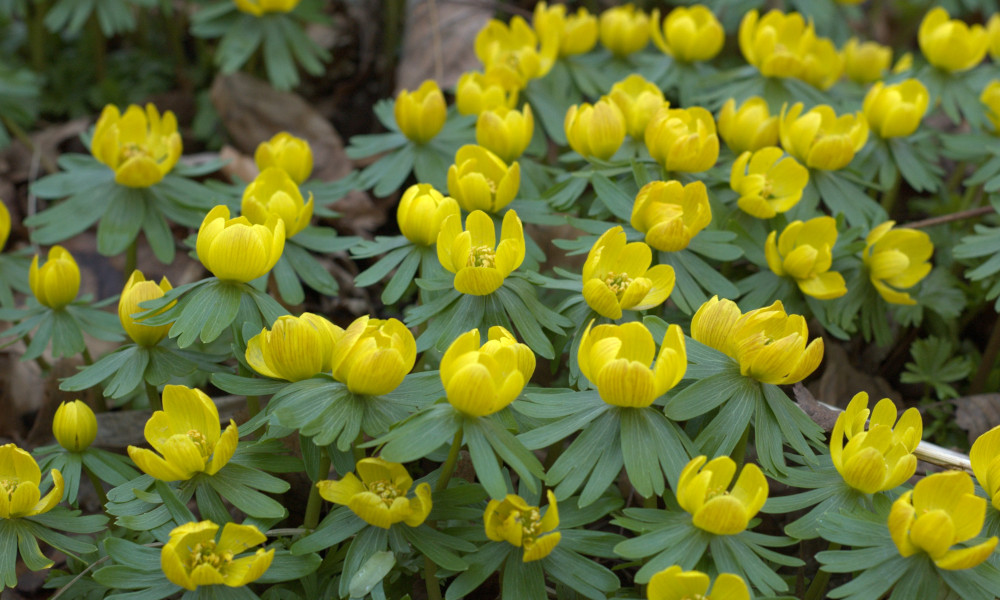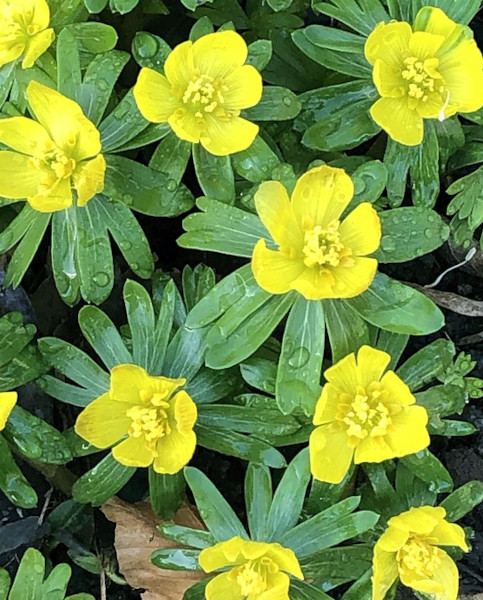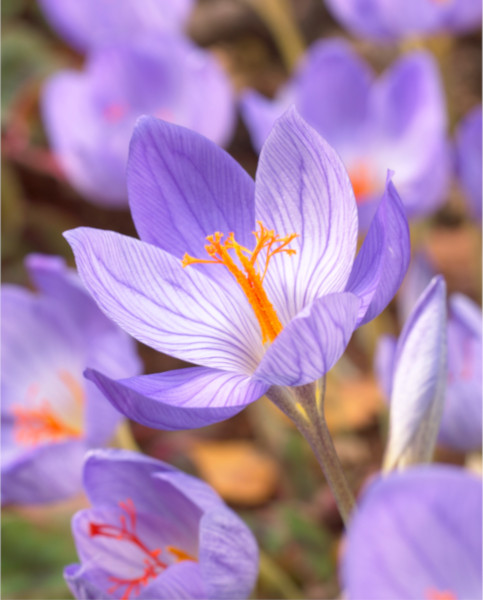How to grow Eranthis
A wonderful European woodland plant, Eranthis is a small, clump-forming, perennial member of the buttercup family, which bears bright yellow, cup-shaped flowers above ruffs, or collars, of bright green, dissected leaves. Leaves start to emerge in midwinter and are joined by flowers throughout February and March. For many, the sight of eranthis is a familiar and welcome sign of a new season on its way.
Eranthis hyemalis, or the winter aconite, is the best-known species within the genus, and has made itself so at home in Britain, it appears to be native. In fact, this plant hails from an area spanning southern France to Bulgaria and was introduced to our shores in the 16th century.
The name eranthis is thought to be a compound of the Greek ‘er’, for spring, and ‘anthos’, for flower. ‘Hyemalis’ is a Latin epithet for winter-flowering.

Key Information
Soil pH
Position
Hardiness


Where & when to plant Eranthis
Eranthis grows from small, knobbly tubers, which can be planted in autumn. However, like snowdrops, these plants are best planted ‘in the green’. ‘In the green’ is when eranthis are lifted and replanted just after flowering, with stems and leaves still attached.
Eranthis is adapted to the conditions found in its natural origins, these usually being damp, deciduous woodlands; they receive plenty of light in winter and spring, moist shade in the summer, and a big dose of organic matter from leaf fall in the autumn. For best results, it is important to try and match these conditions as closely as possible, by planting beneath deciduous trees and shrubs, in a reliably moist, rich soil, and mulching (or allowing fallen leaves to remain on the ground) each year.
Eranthis are happy planted in both bare soil and grass.
How to plant Eranthis
- If planting dried tubers in autumn, soak overnight beforehand
- Clear the area of weeds
- Dig a shallow planting hole which will allow the top of the tuber to be 5cm beneath the surface of the soil
- Place the tuber in the hole
- Backfill with soil and gently firm in with foot (if spring planting in the green, ensure stems and leaves are poking up above ground)
- Soak well with water
- Mulch around the base with well-rotted organic matter
- Continue to water well until fully established.

What to plant with Eranthis
Bring one of the most treasured wildflowers to your garden where it will create stunning drifts of colour.
One of the earliest plants to flower, and probably sharing the honorary title with snowdrops, Eranthis happily grow with other woodland wonders like Epimedium, Hyacinthoides (Bluebells) and Galanthus (Snowdrops) that all like similar shady spots.
Plant in rockeries with some popular alpine plants. Create stunning patio planter displays, or plant at the front of your borders with companions such as Primroses or Iris reticulata. And don’t forget to include some bulbs, we suggest a short Narcissus such as February Gold, a purple crocus like Crocus Spring Beauty or the bright yellow Erythronium Pagoda – just a few ideas for a fantastic display.



How to care for Eranthis
Pruning and Deadheading
Plants will naturally die back after flowering, meaning no pruning is required.
Watering
If planted in the right conditions and mulched annually, eranthis should require very little in the way of additional watering.
Cold Protection
Eranthis hyemalis is fully hardy, requiring no cold protection.
Pests and Diseases
Generally, eranthis is problem free, though can sometimes be affected by smut. This is a fungal disease which causes pale swellings, later releasing black spores, on stems and leaves. Parts affected may wither and die.
Caught early, affected parts can be removed and destroyed (i.e., burned or removed from the premised) leaving a healthy plant in the ground. Unfortunately, if the whole plant is affected, it must be removed and destroyed to avoid further spread.
How to propagate Eranthis
To use your eranthis population to provide plants for elsewhere in the garden (or indeed, to give to friends and family), plants can be lifted, divided, and replanted (or potted and grown on) immediately after flowering. However, if your goal is a naturalised carpet/ colony, aim for minimal disturbance, and allow them to self-seed. They will do this readily once established.
To lift and divide:
- Choose a day when the soil is not frozen or waterlogged
- Dig a clump out of the ground
- Shake off any excess soil
- Gently separate the plant into smaller sections if necessary
- Discard old, damaged, or surplus pieces, keeping healthy, vigorous material
- Replant or pot up selected pieces as required
- Water well until fully established.
Common Eranthis questions
- Is eranthis good for wildlife?
This is one of the earliest plants to flower and is a vital source of nectar for early flying pollinators. A top choice for the wildlife conscious gardener.
- How long will it take to achieve a naturalised carpet of eranthis?
These plants can take a few years to flourish, and once they are settled and established, they should start to seed around readily. Take care not to interfere with this process – overzealous tidying, or regular walking over the area can destroy new seedlings. If possible, leave well alone, allowing the leaf fall from the surrounding trees and shrubs to remain on the ground.
- Do eranthis make good cut flowers?
The extremely short stalks of these flowers mean they are generally unsuitable for displaying in a vase. However, floating in a bowl of water en masse, they can look spectacular for up to a week or more.
- Can eranthis be grown in a container?
Eranthis have shallow roots and tubers growing just beneath the surface of the soil, which makes them well suited to containers. Simply position in full sun during late winter and early spring, then move somewhere shady and keep moist for the rest of the year.




